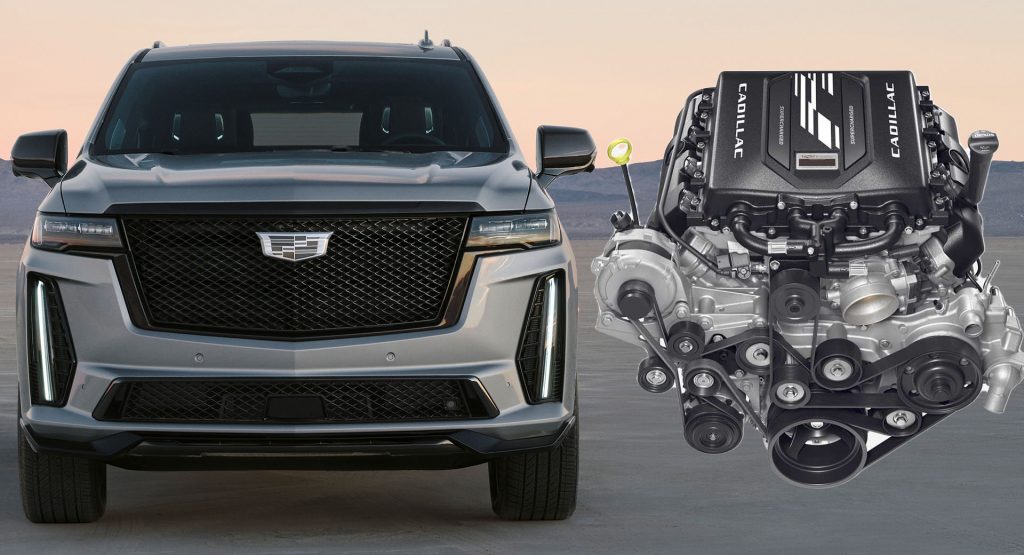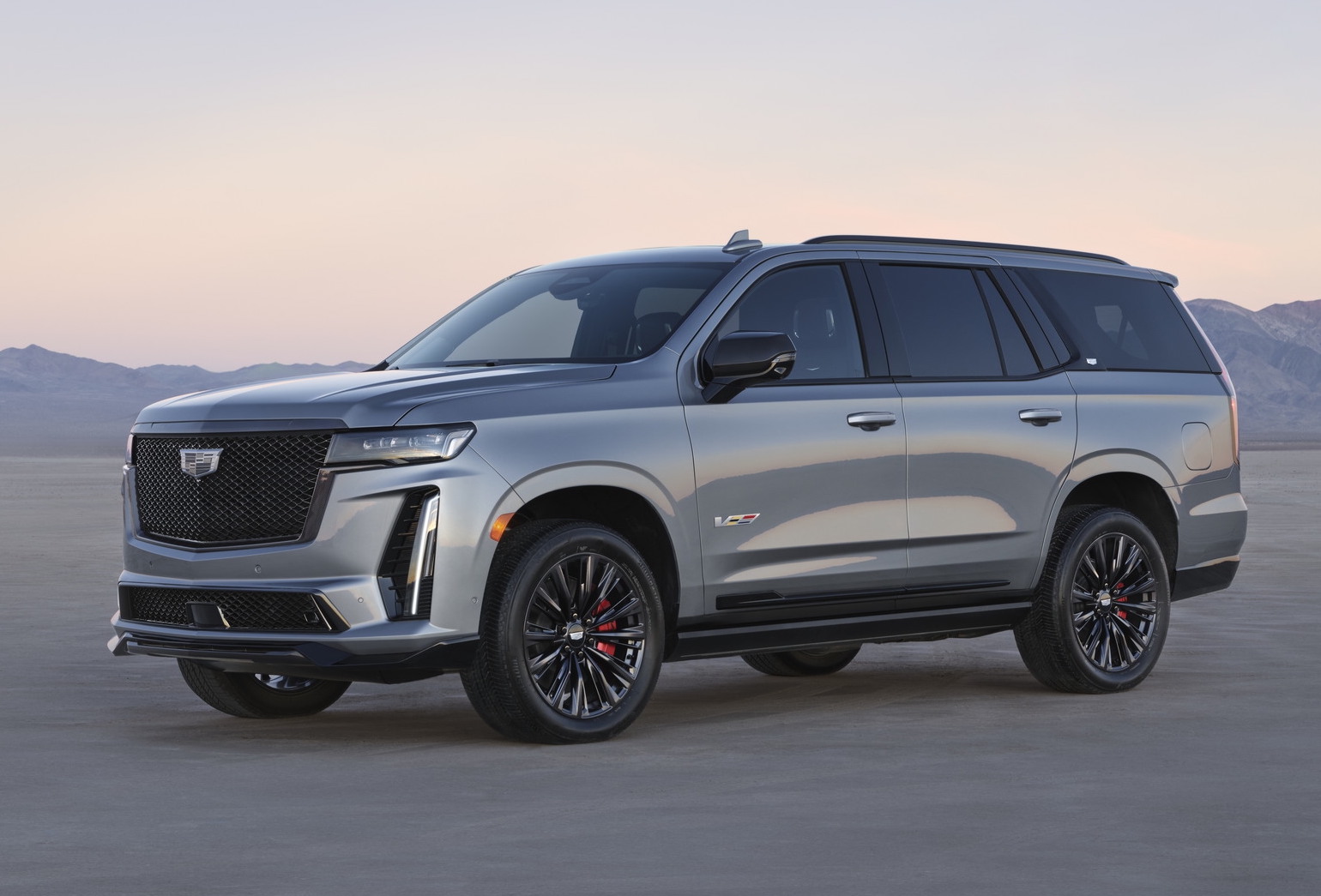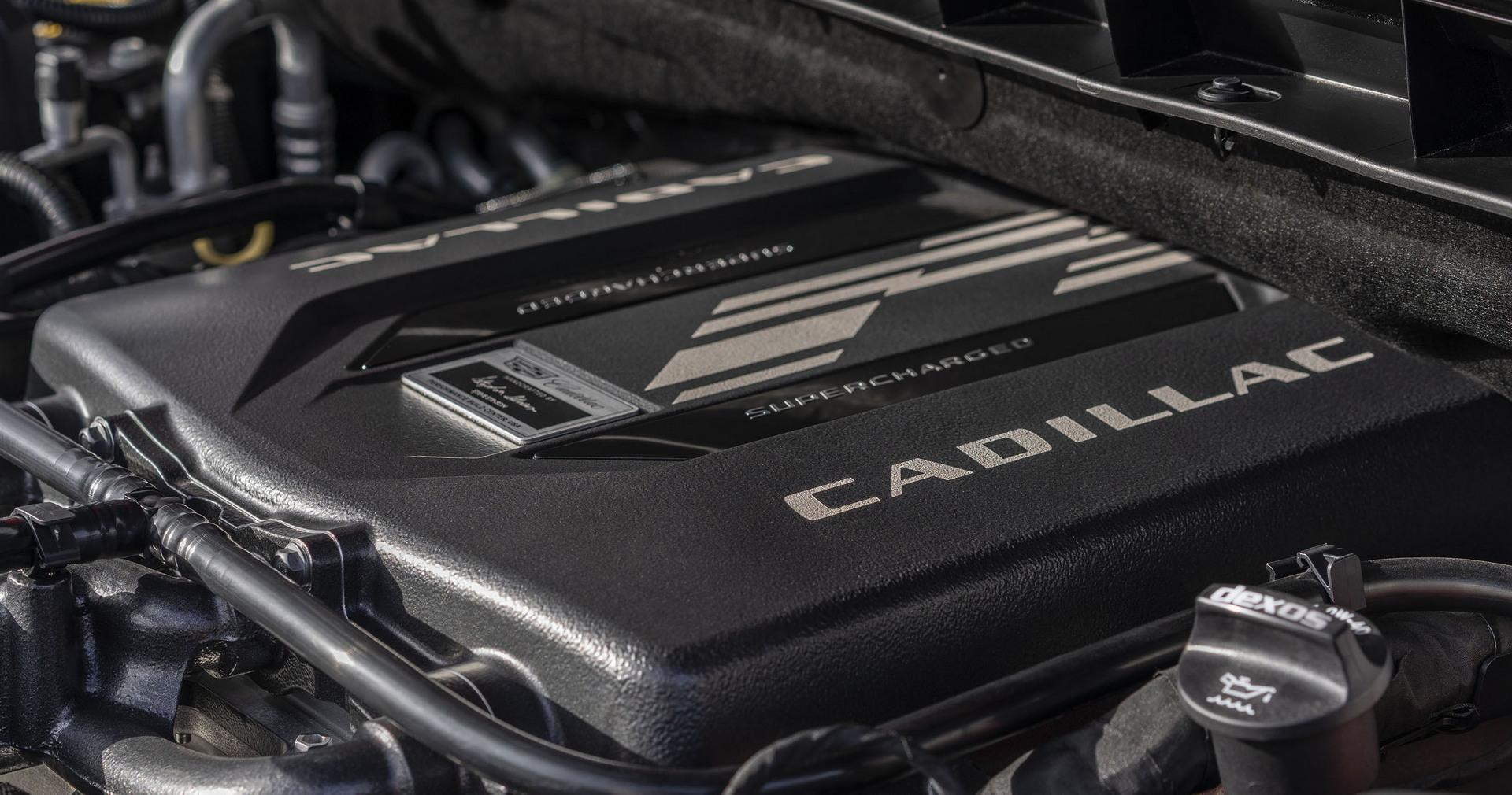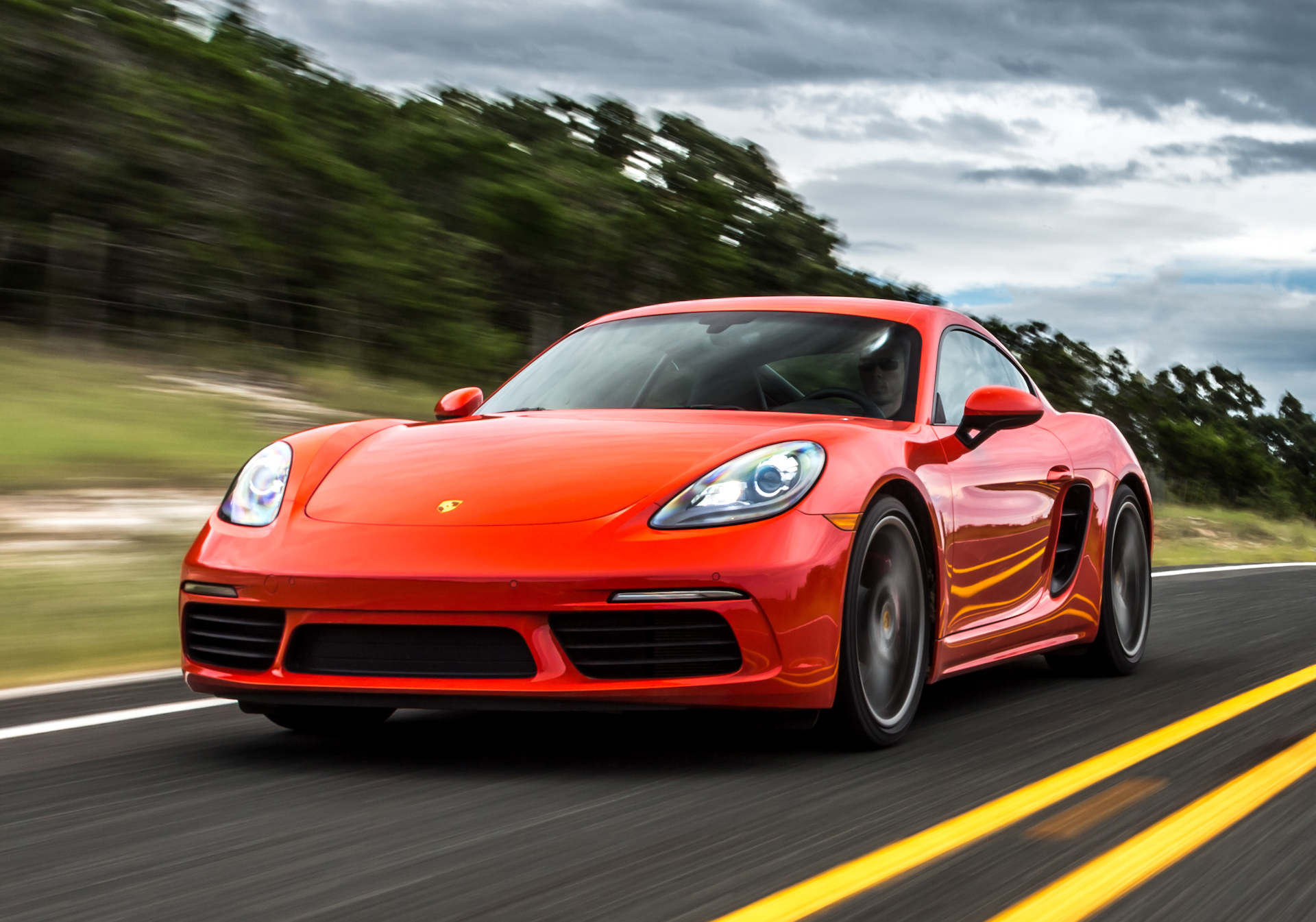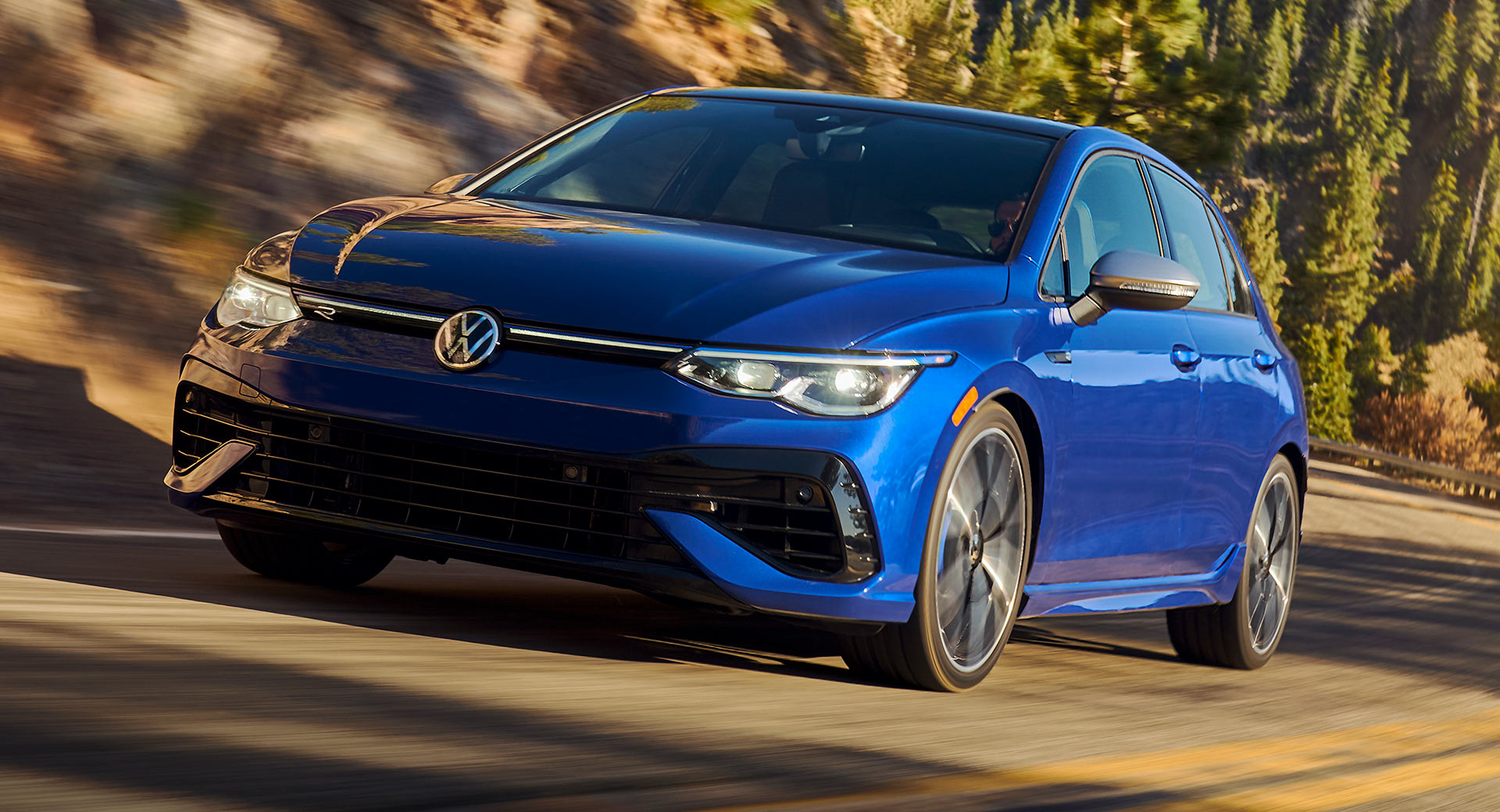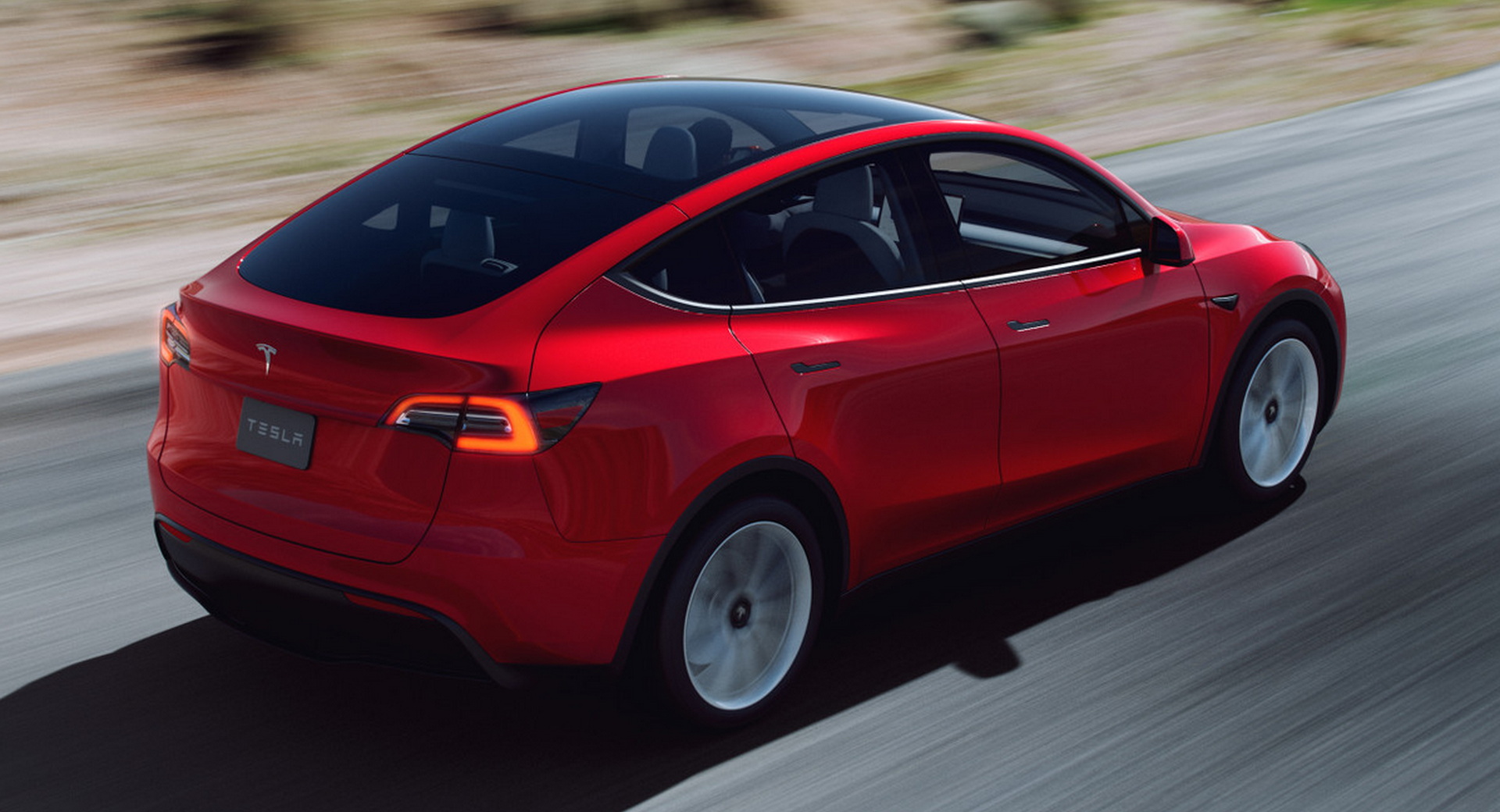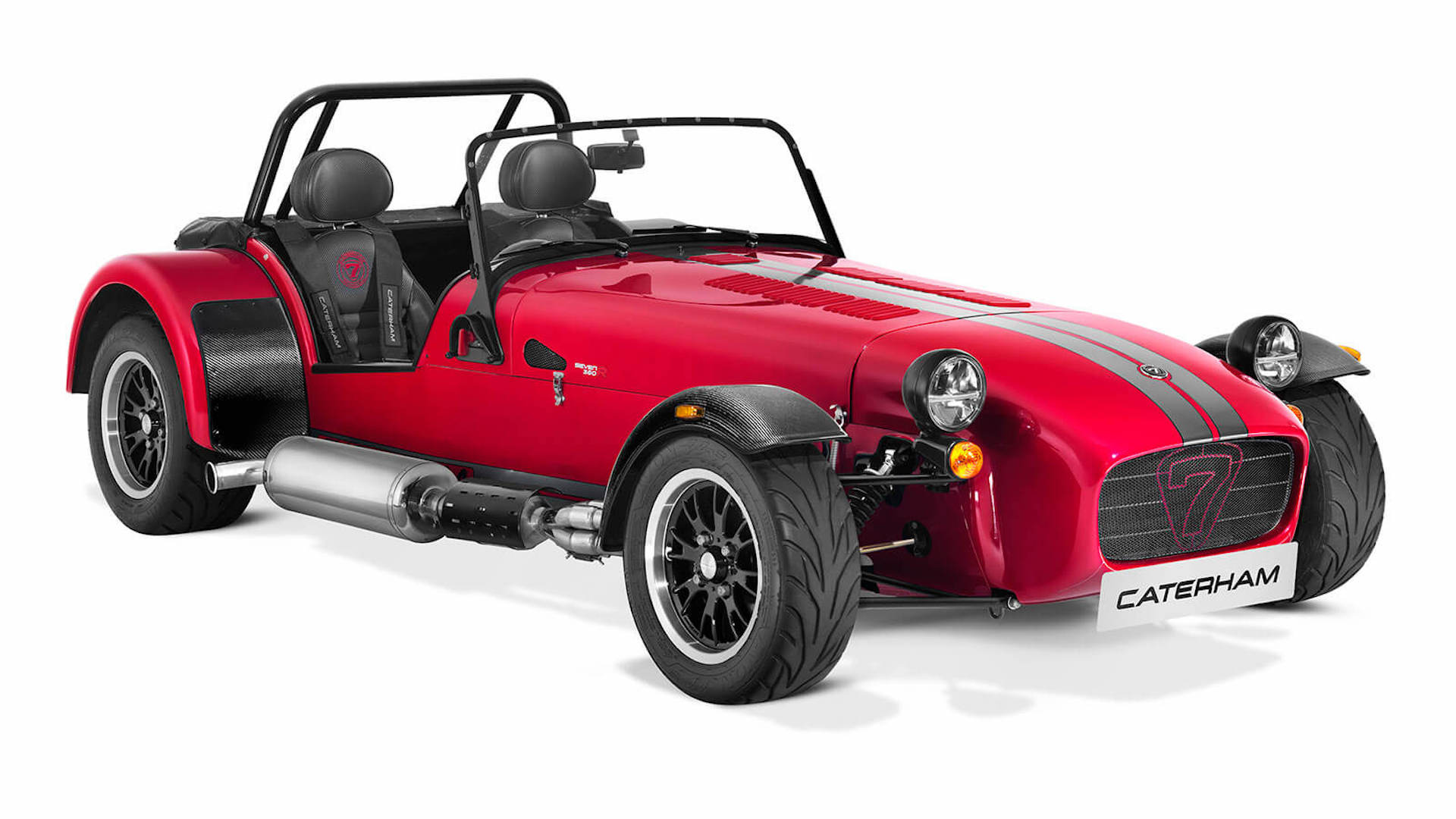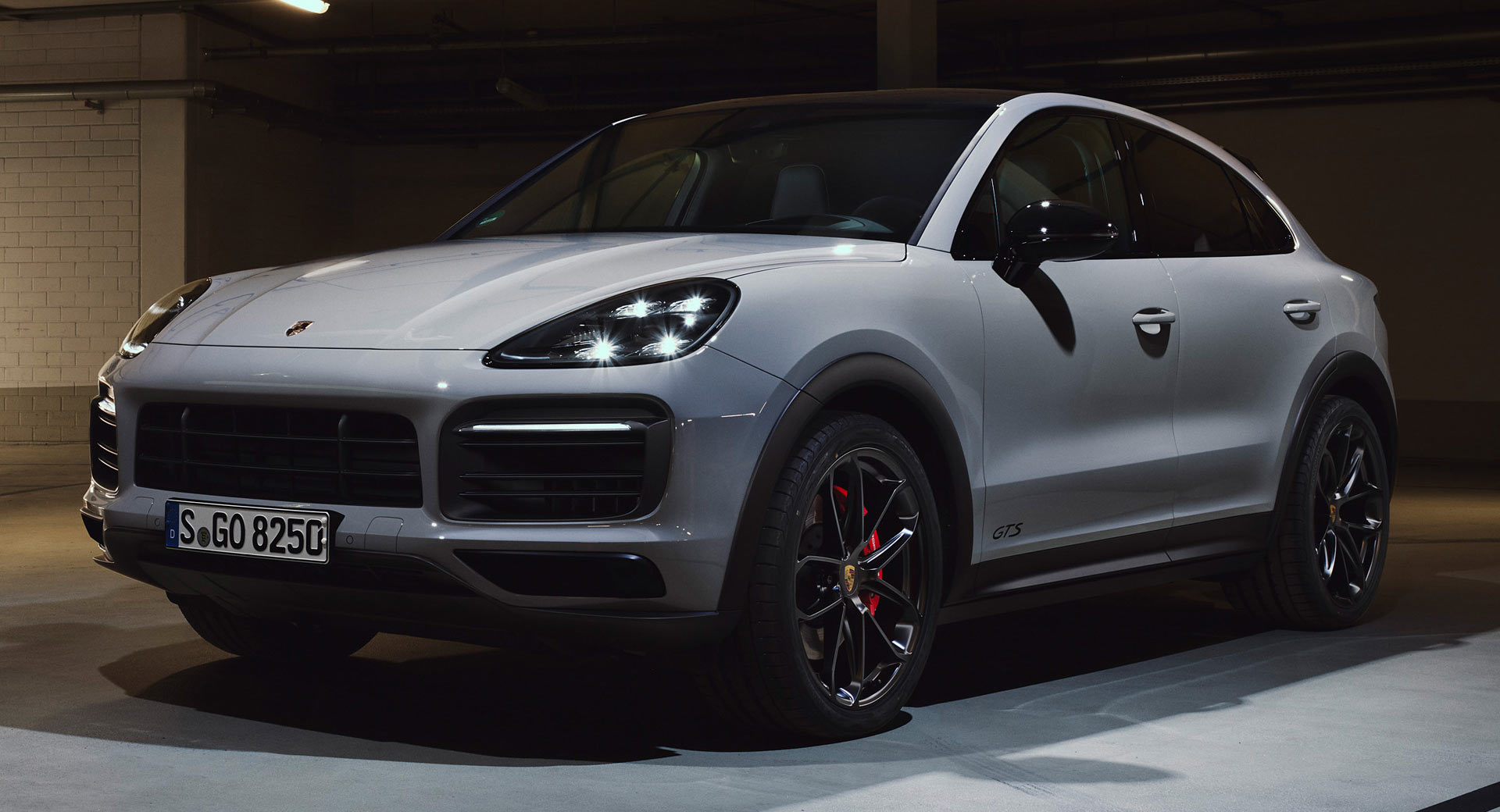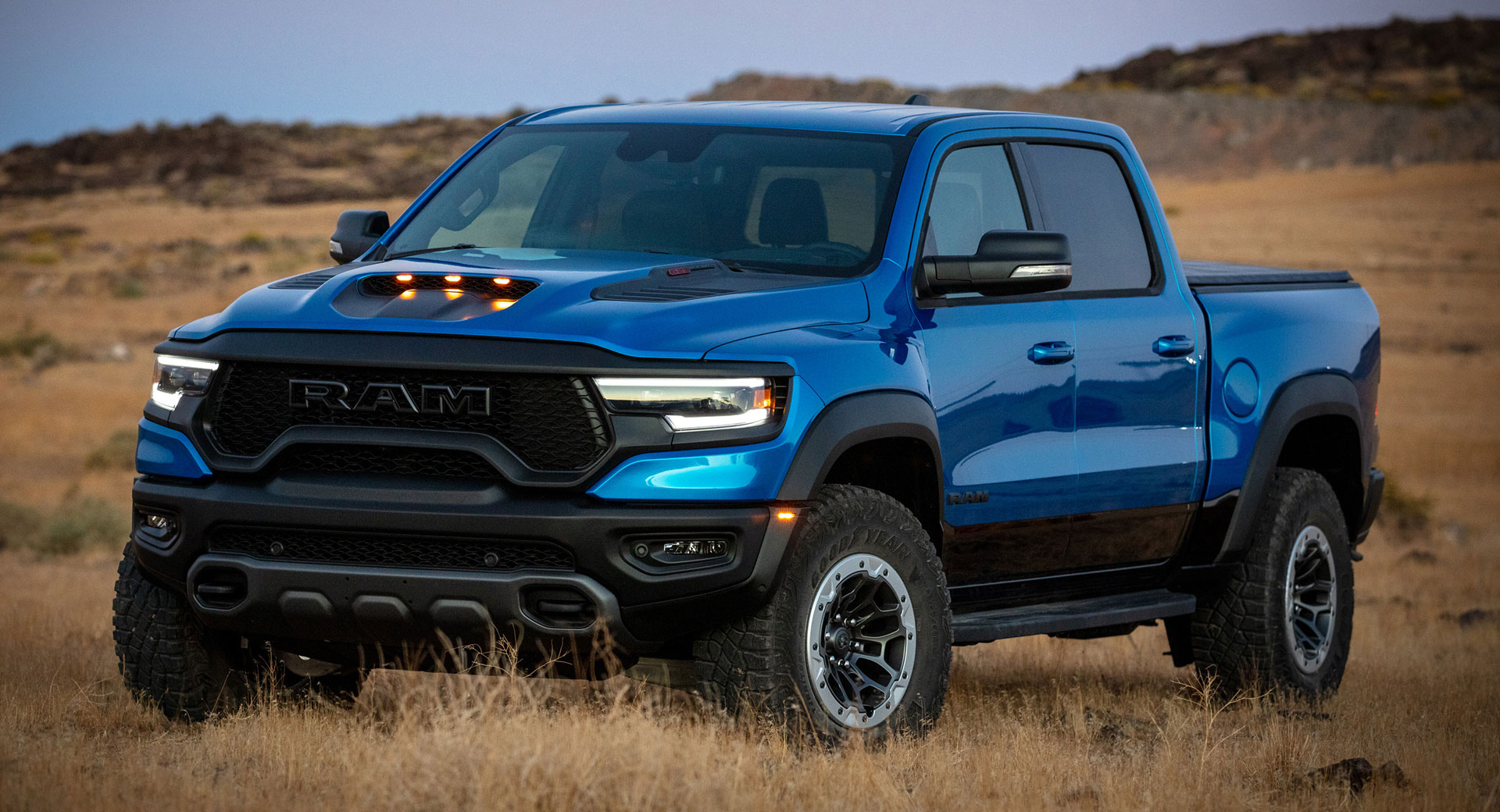Cadillac finally unveiled the 2022 Escalade-V earlier this week, a monster-sized and monster-powered SUV that comes with some fairly jaw dropping numbers. The first of those is the 6,217 lbs (2820 kg) curb weight figure (the stretched ESV is 6,407 lbs/2,906 kg), which makes it almost as heavy as three Mazda MX-5 Miatas, or the same as a Volkswagen Golf R towing a car trailer with an original Lotus Elise on the back.
Another staggering stat is the 16.1 in (409 mm) diameter of the brake rotors, which are bigger than the entire wheels fitted to that S1 Elise we just mentioned, while some have raised eyebrows at the $149,990 price that ensures the V is the most expensive Cadillac ever.
But we’re interested in the 4.4 seconds the Escalade-V requires to hit 60 mph (96 km/h). The gargantuan seven-seat body-on-frame SUV shrugs off its colossal curb weight to achieve that sixty time courtesy of the supercharged V8 based on the one found in the CT5-V Blackwing. The 6.2-liter motor endows the hottest Escalade with 682 hp (692 PS) and 653 lb-ft (885 Nm) of torque.
Related: The 2023 Escalade-V Is The Most Powerful And Expensive Production Cadillac Ever
Technically, the Dodge Durango Hellcat is even more outrageous, thanks to its 710 hp (720 PS) Hellcat V8, 3.5-second zero to 62 mph performance, and 8,700 lbs (3,950 kg) towing capability (the Escalade-V is limited to hauling 7,000 lbs/3,175 kg).
But the Hellcat is no longer on sale, and anyway, let’s not take anything away from the Caddy’s ability to bend the laws of physics. Getting a 6,200 lbs combustion machine based on a truck chassis and possessing all the aerodynamic properties of a shipping container to 60 mph in 4.4 seconds is some achievement.
And it’s something these 10 supposedly rapid performance cars can’t beat. Just a note about the numbers: you might find performance figures quoted that are different to the ones shown here, but we’ve stuck with automaker-supplied figures where possible in the interest of fairness.
Porsche 718 Cayman S – 4.4 seconds
The days of Porsche artificially restricting the Boxster and Cayman to protect the 911’s blushes are largely gone. Last year it unleashed a genuine GT3-engined car, the 718 Cayman GT4 RS, and in 2022, every single car from the base 2.5-liter Boxster and Cayman up can duck below 5 seconds to 60 mph.
But not by much. The entry-level 296 hp (300 PS) cars need 4.9 seconds, the 345 hp (350 PS) S can only equal the Escalade’s 4.4 second time, and even the 394 hp (400 PS) 4.0-liter GTS requires 4.3 seconds when equipped with the six-speed manual, making it barely quicker than the Cadillac. Drop an extra $3,730 for the seven-speed PDK auto, however, and you drop the sprint time to 3.8 seconds.
Jaguar F-Type P450 – 4.4 seconds
Jaguar axed the four- and six-cylinder variants of its F-Type sports car from its U.S. lineup for 2023, leaving two supercharged V8s as the only available powerplants. Whichever one of those you choose, the two-seat Jag has the looks and the growly soundtrack to suggest it’d whup the Escalade in a straight fight to 60 mph. But only one version of the Jag can actually pull that off.
The F-Type R certainly can, its 567 hp (575 PS) output and standard all-wheel drive hauling it to 60 mph in 3.5 seconds, and eventually on to 186 mph (300 km/h). But regardless of whether you pair the F-Type P450 little brother’s 444 hp (450 PS) with a simple rear-wheel drive chassis or heavier, but theoretically stickier, all-wheel drive alternative, you’ll not get to 60 mph faster than the 4.4 seconds the Escalade requires.
Subaru WRX – 6.0 seconds
Go back 20 years and a WRX-badged Subaru was just about the fastest thing on the road this side of full blown supercar, and even some of them struggled to nose ahead to 60 mph if the pavement was damp.
Unfortunately for Subaru fans, power and performance has stagnated in recent years. There’s no longer an STI halo model, and despite gaining half a liter of swept volume over last year’s model, the 2022 WRX increases output by only 3 hp (3 PS) to 271 hp (275 PS). When Edmunds strapped its timing gear to a manual-shift car, its testers recorded a miserable 6.0 seconds to 60 mph, 0.3 seconds longer than Autocar needed to reach the same yardstick way back in October 2000 in a blob-eye WRX.
VW Golf R – 4.5 seconds
The 2022 Golf R is one of the great sleepers of our time. Bar the quad tailpipe setup (and even that is fairly discrete), there are few visual clues to alert non-car types to the fact that you’re packing 315 hp (319 PS) under the crisply pressed hood, or that you’ve got all-wheel drive to make sure the turbocharged inline four’s 295 lb-ft (400 Nm) gets to the pavement cleanly.
Related: Epic Drag Race Shows All Generations Of The Porsche 911 Turbo Going Toe-To-Toe
Next to the Escalade-V though, it’s the Golf R’s performance, and not just its styling, that looks sleepy. Volkswagen U.S.’s retail website quotes 4.7 seconds to 60 mph, but that appears to be lifted directly from the 0-62 mph (100 km/h) time quoted in Europe, putting the sixty time at around 4.5 seconds. Either way, we’d back the Escalade in a drag race.
Tesla Model Y Long Range – 4.8 seconds
No one, including Tesla, is claiming the Model Y Long Range is a track-hungry enthusiast’s car. But all Teslas are rocket ships, right? They certainly feel it thanks to their instant step-off, and with its dual motors and all-wheel drive, the base Model Y has the drag racing chops to scalp a few hot hatches and sports cars.
But it doesn’t have the measure of the Escalade according to the two companies’ official test figures, Tesla’s numbers putting the Model Y 0.4 seconds behind the General’s flagship SUV.
Dodge Challenger R/T Scat Pack Widebody manual – 4.9 seconds
Surely a proper muscle car can take down the Escalade-V? Okay, so the Challenger R/T Scat Pack hasn’t not got a Hellcat motor under that scooped hood, but the 6.2-liter V8’s 485 hp (492 PS) has almost 1,900 lbs (861 kg) less metal to drag down the drag strip, and the Widebody kit reinforces the visual impression that this thick R/T means business.
Unfortunately, it’s easier to buy a 2023 Corvette Z06 at MSRP than find official zero to 60 mph figures on most U.S. car retail websites, so we’re not sure exactly how fast Dodge thinks the Widebody accelerates. Some indy tests suggest the automatic can get to 60 in the low-4-second range, but Edmunds’ manual transmission car needed 4.9 seconds. So unless your launch- and shifting game is perfectly on-point, don’t bet on gapping the Escalade in your stick-shift, sub-Hellcat Challenger.
Mercedes-AMG GT 53 4-door – 4.4 seconds
Driving an AMG car (as opposed to an AMG-Line model) brings with it a certain sense of security when it comes to performance. You can be pretty sure that whichever AMG you’re driving you’ll be able to stroll away from most challengers, including pimped up Cadillac SUVs with wheels the size of beach umbrellas and a V-badge on the door.
Except you can’t. True, the real hardcore AMGs like the two-door GT coupe can waste the Escalade in a straight line with their sub-4-second zero to 60 mph performance; the CLA 43 does the job in 4.0 seconds and the E 53 coupe just sneaks ahead with a 4.3-second showing. But the GT 53 4-dr pictured above can only match the Caddy’s 4.4-second figure, and just about every other AMG currently available in the U.S. is slower, from the GLC 43 (4.5 seconds) to the mighty G 63 (4.8 seconds).
Caterham Seven 360 – 4.8 seconds
A Caterham Seven is so far removed from an Escalade-V that if the two ever met, they’d probably not even realize they’re from the same genus. The 360 sits in the middle of Caterham’s range between the entry level 170 and the certifiably insane (or is that just its drivers?) 620R, and is powered by a naturally aspirated 2.0-liter Ford Duratec.
That sends 178 hp (180 PS) and 143 lb-ft (194 Nm) to the rear wheels, which might not sound much, but then neither does the comical 1,235 lbs (560 kg) curb weight. Launch one of these babies and send it up through the gears, and you’ll swear you did 60 mph in 3.0 seconds, though in fact the GPS-verified 4.8-second time puts it almost half a second behind the Caddy.
Porsche Cayenne GTS – 4.5 seconds
The GTS isn’t the most extreme Cayenne you can buy, but those GTS letters on the trunk tell you it’s Porsche’s most driver focused SUV this side of the five-piece Turbo lineup.
Related: Zero to 60 MPH In 11 Secs? Meet The Slowest Corvettes Ever
But the best the 453 hp (460 PS) twin-turbo V6 motor under the Cayenne GTS‘s hood can do is 4.5 seconds to 60 mph. Curiously, Porsche says the Coupe version of the GTS can do the job in 4.2 seconds despite it having the same drivetrain, the same 167 mph (279 km/h) top speed, and weighing only 22 lbs (10 kg) less.
Ram 1500 TRX – 4.5 seconds
So you want to compare apples with apples, or at least with something else with enough torque to uproot an entire orchard? You might think the Ram 1500 TRX would be in with a shout of shaming the Escalade-V. Though it’s a pick-up and the Caddy is an SUV, they’re both old-fashioned body on frame trucks at heart, and both are fitted with 6.2-liter supercharged V8s driving all four wheels. But the Ram’s Hellcat motor makes 702 hp (712 PS) to the Escalade’s 682 hp (692 PS) while coming within 3 lb-ft (4 Nm) of matching the Cadillac’s 653 lb-ft (885 Nm) torque output.
According to Ram, however, the TRX takes 4.5 seconds to hit 60 mph, putting it a tenth behind the Escalade-V, and though independent tests have shown that the Ram can duck into the threes, it seems fair to assume that Cadillac is also sandbagging, and that the Escalade is even faster than it claims. How fast do you think the independent testers at titles like Car & Driver will get the Escalade-V to go?




